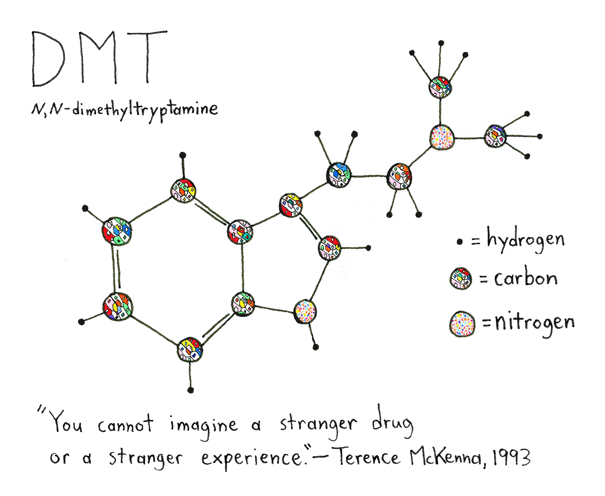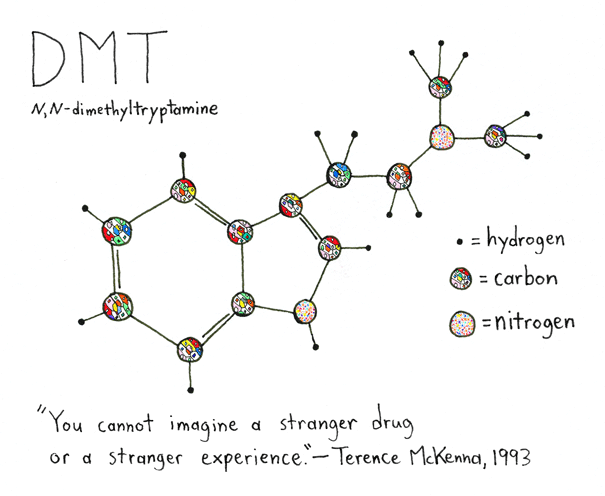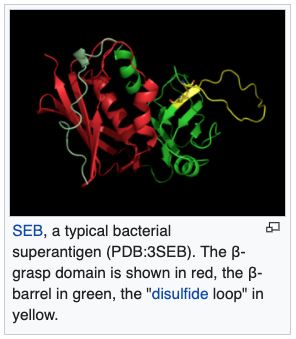
#ScienceBreakdown: A group of scientists (@DEOlsonLab) created an ibogaine analog lacking nasty properties of ibogaine but retaining desirable ones. It is also claimed to be non-hallucinogenic.
Background and dissection of study below.
Full study: sci-hub.st/https://www.na…
1/
Background and dissection of study below.
Full study: sci-hub.st/https://www.na…
1/

Background:
Ibogaine is an alkaloid found in iboga, a shrub from West Africa. It's a dissociative psychedelic and can induce intense hallucinations that last for many hours.
Prelim evidence suggests it may help treat addiction, but it can also have serious side-effects.
2/
Ibogaine is an alkaloid found in iboga, a shrub from West Africa. It's a dissociative psychedelic and can induce intense hallucinations that last for many hours.
Prelim evidence suggests it may help treat addiction, but it can also have serious side-effects.
2/

You obviously don't want a drug to have severe side-effects, and ibogaine has some, including cardiotoxicity (heart damage).
There's also a push in the psychedelic drug space to develop psychedelic analogs that retain therapeutic properties but don't induce hallucinations.
3/
There's also a push in the psychedelic drug space to develop psychedelic analogs that retain therapeutic properties but don't induce hallucinations.
3/
The idea of this paper was to synthesize new drugs that lack certain chemical components of the ibogaine structure.
If you chop off pieces of the ibogaine molecule maybe you can preserve desired effects (anti-addiction, anti-depressive), but get rid of nasty side-effects.
4/
If you chop off pieces of the ibogaine molecule maybe you can preserve desired effects (anti-addiction, anti-depressive), but get rid of nasty side-effects.
4/

So, they used chemistry to synthesize ibogaine analogs, and then did experiments in different systems (in vitro, mice, rats, zebrafish) to measure the effects of each.
This was a multidisciplinary study. Organic chem. Pharmacology. Optical imaging. Behavior.
Pretty cool.
5/
This was a multidisciplinary study. Organic chem. Pharmacology. Optical imaging. Behavior.
Pretty cool.
5/

They create two ibogaine analogs, IBG + TBG. Structural similarity to 5-MeO-DMT, a potent hallucinogen. Like other classic psychedelics, it activates 5HT2A serotonin receptors.
They compare IBG + TBG to 5-MeO-DMT in mice, to see how their hallucinogenic potential compares.
6/
They compare IBG + TBG to 5-MeO-DMT in mice, to see how their hallucinogenic potential compares.
6/

To measure hallucinogenic potential, you give mice a drug and count how often their heads twitch.
Classic psychedelics cause mice to twitch their heads. IBG + TBG result in less head twitching than mice given 5-MeO-DMT, indicating lower hallucinogenic potential.
BUT...
7/
Classic psychedelics cause mice to twitch their heads. IBG + TBG result in less head twitching than mice given 5-MeO-DMT, indicating lower hallucinogenic potential.
BUT...
7/

This does *not* prove they won't be hallucinogenic in humans. Many reasons why mice might twitch less w/ higher doses of a drug.
Note that both compounds active at 5HT2A, albeit less so than 5-MeO-DMT.
(More on hallucinogenic potential towards the end).
8/
Note that both compounds active at 5HT2A, albeit less so than 5-MeO-DMT.
(More on hallucinogenic potential towards the end).
8/

Next, they look at how IBG + TBG affect hERG channels. Ibogaine inhibits these potassium channels, which has to do with its cardiotoxicity.
IBG and especially TBG inhibit this channel much less than ibogaine, meaning they're less likely to cause cardiotoxicity.
9/
IBG and especially TBG inhibit this channel much less than ibogaine, meaning they're less likely to cause cardiotoxicity.
9/

They use zebrafish to look at developmental defects. Zebrafish are good for this b/c they have small, clear bodies, so it's easy to literally watch them develop.
IBG + TBG (ibogaine analogs) don't cause the obvious problems in development you get with ibogaine (IBO).
10/
IBG + TBG (ibogaine analogs) don't cause the obvious problems in development you get with ibogaine (IBO).
10/

Technical graph, but shows IBG + TBG activate serotonin receptor 5HT2A (the "psychedelic receptor"), less so than serotonin and 5-MeO-DMT, but more than 6-MeO-DMT.
They do *not* activate 5HT2B receptors, which is good b/c that's linked to heart issues.
11/
They do *not* activate 5HT2B receptors, which is good b/c that's linked to heart issues.
11/

Next they look at neuronal plasticity. Classic psychedelics (psilocybin, LSD) and ketamine are "psychoplastogens," meaning they induce plasticity.
They wanted to see if IBG + TBG also do this.
[Image below is from past work, comparing ketamine (KET) to placebo (VEH)]
12/
They wanted to see if IBG + TBG also do this.
[Image below is from past work, comparing ketamine (KET) to placebo (VEH)]
12/

Used 2-photon imaging to (literally) look at rat neurons in a petri dish. Similar to ketamine + ibogaine, IBG + TBG increase measures of structural plasticity. This effect depends on 5HT2A receptors.
They then look at similar thing in vivo (in a living animal), in mice...
13/
They then look at similar thing in vivo (in a living animal), in mice...
13/

They see more newly formed dendritic spines to DOI (LSD-like drug) and TBG. "Spines" are the small nobs coming off of branches, where two neurons can connect.
A bit weird they show results for TBG but not IBG, and use a different positive control from previous experiments.
14/
A bit weird they show results for TBG but not IBG, and use a different positive control from previous experiments.
14/

Next they look at antidepressant-like effects, using a behavioral test in mice. Similar to ketamine, TBG produces antidepressive-like effects, but the effects don't seem to last as long as ketamine, and it only worked at the higher dose they tested.
15/
15/

Skipping the details, they show positive effects of TBG on both alcohol- and heroin-seeking behavior, indicating that TBG may also have anti-addiction potential.
16/
16/

Overall, cool multidisciplinary study showing that new ibogaine analogs retain some of ibogaine's potential therapeutic properties but lack nastier ones.
The other major claim is that the new drug TBG is non-hallucinogenic. IMO this is the most disputable claim here.
17/
The other major claim is that the new drug TBG is non-hallucinogenic. IMO this is the most disputable claim here.
17/

IBG + TBG cause fewer head twitches in mice. Presence of lots of twitches may indicate hallucinogenic potential, but I don't think a lack of twitching shows lack of this potential.
Notice also that *higher* doses of IBG + TBG trend toward even less twitching. This is odd.
18/
Notice also that *higher* doses of IBG + TBG trend toward even less twitching. This is odd.
18/

Both IBG + TBG activate 5HT2A receptors to some extent. 5-MeO-DMT > IBG > TBG > 6-MeO-DMT.
They also show many effects on plasticity + behavior that depend on 5HT2A activation.
I suspect IBG, and to some extent TBG, may be hallucinogenic in humans, perhaps just mildly.
19/
They also show many effects on plasticity + behavior that depend on 5HT2A activation.
I suspect IBG, and to some extent TBG, may be hallucinogenic in humans, perhaps just mildly.
19/

There's a big push in #psychedelics research right now to create "non-psychedelic psychedelics." Drugs w/ the benefits but w/o hallucinations.
I think, for some therapeutic effects, there may be an unavoidable tradeoff here that has to do with 5HT2A receptor activation.
20/
I think, for some therapeutic effects, there may be an unavoidable tradeoff here that has to do with 5HT2A receptor activation.
20/

We know 5HT2A is necessary for classic psychedelic effects. We also know from this work + others that some therapeutic effects may require 5HT2A-dependent plasticity.
This is relevant for treating depression and addiction, which may require this 5HT2A-dependent plasticity.
21/
This is relevant for treating depression and addiction, which may require this 5HT2A-dependent plasticity.
21/
So, there may be a tradeoff: stronger 5HT2A activation means more plasticity + potential for behavioral change, but it also means hallucinations.
A weaker 5HT2A activator may give weaker hallucinations, but it may also induce lower levels of plasticity.
22/
A weaker 5HT2A activator may give weaker hallucinations, but it may also induce lower levels of plasticity.
22/
In this study IBG is a stronger 5HT2A activator than TBG, but they don't look at IBG in several experiments. I suspect they would have seen *stronger* behavioral effects with IBG, since some of these depend on 5HT2A activation.
23/
23/
In humans, it remains to be determined if a non-hallucinogenic compound can produce results similar to what's been observed for large, single doses of psilocybin, e.g. for anxiety/depression.
24/
24/
What's exciting about things like psilocybin and MDMA is that you get large, *sustained* effects after just 1-3 (larger) doses w/ therapy.
New drugs like TBG may be weaker hallucinogens (nominally a good thing), but perhaps at the cost of weaker/less sustained effects.
25/25
New drugs like TBG may be weaker hallucinogens (nominally a good thing), but perhaps at the cost of weaker/less sustained effects.
25/25
• • •
Missing some Tweet in this thread? You can try to
force a refresh








